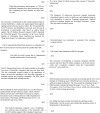An overview of brain-like computing: Architecture, applications, and future trends
- PMID: 36506817
- PMCID: PMC9730831
- DOI: 10.3389/fnbot.2022.1041108
An overview of brain-like computing: Architecture, applications, and future trends
Abstract
With the development of technology, Moore's law will come to an end, and scientists are trying to find a new way out in brain-like computing. But we still know very little about how the brain works. At the present stage of research, brain-like models are all structured to mimic the brain in order to achieve some of the brain's functions, and then continue to improve the theories and models. This article summarizes the important progress and status of brain-like computing, summarizes the generally accepted and feasible brain-like computing models, introduces, analyzes, and compares the more mature brain-like computing chips, outlines the attempts and challenges of brain-like computing applications at this stage, and looks forward to the future development of brain-like computing. It is hoped that the summarized results will help relevant researchers and practitioners to quickly grasp the research progress in the field of brain-like computing and acquire the application methods and related knowledge in this field.
Keywords: brain-like computing; learning algorithms; neuromorphic chips; neuronal models; spiking neural learning; spiking neuron networks.
Copyright © 2022 Ou, Xiao, Zhu, Han and Zhang.
Conflict of interest statement
The authors declare that the research was conducted in the absence of any commercial or financial relationships that could be construed as a potential conflict of interest.
Figures












Similar articles
-
[A review of brain-like spiking neural network and its neuromorphic chip research].Sheng Wu Yi Xue Gong Cheng Xue Za Zhi. 2021 Oct 25;38(5):986-994. doi: 10.7507/1001-5515.202011005. Sheng Wu Yi Xue Gong Cheng Xue Za Zhi. 2021. PMID: 34713667 Free PMC article. Review. Chinese.
-
Event-driven implementation of deep spiking convolutional neural networks for supervised classification using the SpiNNaker neuromorphic platform.Neural Netw. 2020 Jan;121:319-328. doi: 10.1016/j.neunet.2019.09.008. Epub 2019 Sep 24. Neural Netw. 2020. PMID: 31590013
-
Biologically-Inspired Neuromorphic Computing.Sci Prog. 2019 Sep;102(3):261-276. doi: 10.1177/0036850419850394. Epub 2019 May 14. Sci Prog. 2019. PMID: 31829848 Free PMC article.
-
The future of computing beyond Moore's Law.Philos Trans A Math Phys Eng Sci. 2020 Mar 6;378(2166):20190061. doi: 10.1098/rsta.2019.0061. Epub 2020 Jan 20. Philos Trans A Math Phys Eng Sci. 2020. PMID: 31955683
-
Towards spike-based machine intelligence with neuromorphic computing.Nature. 2019 Nov;575(7784):607-617. doi: 10.1038/s41586-019-1677-2. Epub 2019 Nov 27. Nature. 2019. PMID: 31776490 Review.
References
-
- Aamir S. A., Müller P., Hartel A., Schemmel J., Meier K. (2016). A highly tunable 65-nm CMOS LIF neuron for a largescale neuromorphic system, in ESSCIRC Conference 2016, 42nd. European Solid-State Circuits Conference (IEEE: ), p. 71–74. 10.1109/ESSCIRC.2016.7598245 - DOI
-
- Aamir S. A., Stradmann Y., Müller P., Pehle C., Hartel A., Grübl A., et al. . (2018). An accelerated lif neuronal network array for a large-scale mixed-signal neuromorphic architecture. IEEE Trans. Circuits Syst. I Regular Papers. 65, 4299–4312. 10.1109/TCSI.2018.2840718 - DOI
-
- Abramsky S., Tzevelekos N. (2010). Introduction To Categories and Categorical Logic/New Structures For Physics. Berlin, Heidelberg: Springer, p. 3–94. 10.1007/978-3-642-12821-9_1 - DOI
-
- Adam L. (2014). The moments of the Gompertz distribution and maximum likelihood estimation of its parameters. Scand Actuarial J. 23, 255–277. 10.1080/03461238.2012.687697 - DOI
Publication types
LinkOut - more resources
Full Text Sources

